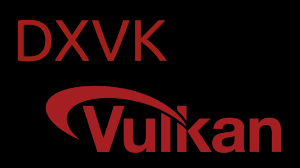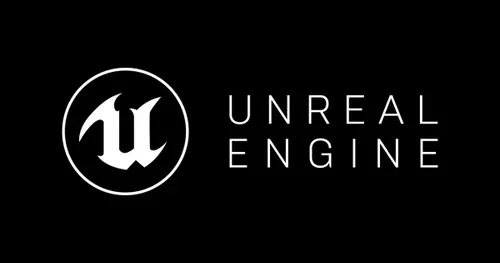DXVK, a powerful Vulkan-based translation layer, transforms Direct3D calls into Vulkan, boosting performance for Windows games on Linux via Wine or Proton. Many gamers wonder if this tool, primarily designed for Linux, functions on Windows systems. Understanding its compatibility opens new possibilities for optimizing gaming experiences across platforms.
Originally developed to enhance Wine’s compatibility with Windows games, DXVK leverages Vulkan’s efficiency to improve frame rates and stability. Its lightweight design minimizes overhead, making it a favorite among Linux gamers. However, its potential on Windows sparks curiosity, especially for users seeking performance tweaks.
This article explores whether DXVK runs on Windows, its benefits, limitations, and setup considerations. By diving into technical details and practical use cases, gamers can decide if integrating DXVK into their Windows setup makes sense for their gaming needs.
What Is DXVK and Its Purpose?
Understanding DXVK’s Core Functionality
DXVK translates Direct3D 9, 10, and 11 calls to Vulkan, enabling Windows games to run efficiently on Vulkan-compatible systems. It reduces CPU overhead, improving performance in GPU-bound titles. This open-source project thrives on community contributions, ensuring regular updates. Its primary goal supports Linux gaming, but its mechanics intrigue Windows users. Compatibility depends on Vulkan support and system configuration.
Why DXVK Exists for Gaming
DXVK emerged to bridge compatibility gaps for Windows games on Linux through Wine. By converting Direct3D to Vulkan, it delivers smoother gameplay and better hardware utilization. Developers aimed to bypass DirectX limitations on non-Windows platforms. Its success on Linux prompts questions about Windows applications. Exploring its purpose clarifies its potential on Microsoft’s OS.
How DXVK Differs from Native DirectX
Unlike native DirectX, DXVK relies on Vulkan, a cross-platform API with lower overhead. DirectX ties directly to Windows, while DXVK offers flexibility across operating systems. It optimizes resource usage, potentially boosting performance in specific scenarios. Understanding these differences highlights why gamers consider DXVK on Windows. Its unique approach challenges traditional graphics pipelines.
Does DXVK Work on Windows?
Technical Compatibility with Windows
DXVK can run on Windows, provided Vulkan drivers and compatible hardware are present. Most modern GPUs, like NVIDIA and AMD, support Vulkan, enabling DXVK functionality. It replaces native Direct3D DLLs with Vulkan-based ones, redirecting API calls. Performance varies based on game and system specs. Testing confirms limited but functional compatibility.
Benefits of Using DXVK on Windows
Running DXVK on Windows offers potential advantages, including:
- Improved Performance: Vulkan’s efficiency can reduce CPU bottlenecks in certain games.
- Cross-Platform Consistency: Matches Linux setups for developers or dual-boot users.
- Open-Source Flexibility: Community patches address specific game issues.
- Lower Overhead: Vulkan’s streamlined design may boost frame rates.
- Experimental Tweaks: Appeals to enthusiasts optimizing niche titles.
Limitations and Challenges
DXVK on Windows faces hurdles like incomplete game compatibility and potential stability issues. Native DirectX often outperforms DXVK on Windows due to optimized drivers. Installation requires manual DLL replacements, risking system errors. Some games may crash or display graphical glitches. These challenges make DXVK less practical for casual Windows users.
How to Install DXVK on Windows
System Requirements for DXVK
To use DXVK, Windows 7 or later and a Vulkan-compatible GPU are necessary. NVIDIA (GTX 600 series or newer) and AMD (GCN architecture) GPUs typically qualify. Vulkan runtime libraries must be installed. A 64-bit system ensures optimal compatibility. Checking GPU driver updates prevents potential issues.
Step-by-Step Installation Process
Installing DXVK involves downloading the latest release from its GitHub page. Extract the DLL files (d3d9.dll, d3d10core.dll, d3d11.dll) to the game’s directory. Ensure Vulkan drivers are updated via GPU control panels. Replace existing Direct3D DLLs cautiously to avoid conflicts. Test the game to confirm functionality and monitor performance.
Troubleshooting Common Issues
If DXVK fails, verify Vulkan support with tools like GPU-Z. Reinstall Vulkan runtime libraries if errors persist. Check for game-specific patches on DXVK’s GitHub issues page. Ensure no conflicting DLLs remain in the game folder. Adjusting graphics settings may resolve stability problems.
Performance Impact of DXVK on Windows
Comparing DXVK to Native DirectX
DXVK can improve performance in CPU-limited games by leveraging Vulkan’s efficiency. However, native DirectX often runs better due to Microsoft’s optimizations. Benchmarks show mixed results, with some titles gaining 5-10% frame rates, while others lag. Game-specific testing determines DXVK’s value. Results depend heavily on hardware and drivers.
Scenarios Where DXVK Excels
DXVK shines in:
- Older Games: Direct3D 9 titles may see smoother performance.
- CPU-Bound Titles: Reduces processor strain in specific cases.
- Cross-Platform Testing: Developers benefit from consistent rendering.
- Niche Hardware: Works well with Vulkan-optimized GPUs.
- Modding Communities: Enthusiasts tweak games for better stability.
Potential Performance Drawbacks
DXVK may introduce overhead in GPU-heavy games, lowering frame rates. Compatibility issues cause crashes or visual artifacts in some titles. Driver updates can disrupt functionality. Native DirectX remains more reliable for most Windows setups. Performance gains are inconsistent, limiting widespread adoption.
When Should You Use DXVK on Windows?
Ideal Use Cases for DXVK
DXVK suits:
- Developers: Testing games across platforms with unified rendering.
- Enthusiasts: Experimenting with Vulkan for performance tweaks.
- Legacy Games: Enhancing older Direct3D 9 titles.
- Dual-Boot Users: Maintaining consistent setups across OSes.
- Open-Source Fans: Leveraging community-driven updates.
Situations to Avoid DXVK
Avoid DXVK for modern DirectX 12 games, as compatibility is limited. Casual gamers may find setup complexity outweighs benefits. Systems with outdated GPUs risk poor performance. Games with heavy anti-cheat systems may conflict. Native DirectX is simpler for most Windows users.
Alternatives to DXVK on Windows
DirectX 12 offers native performance with modern games. Third-party tools like ReShade enhance visuals without replacing DLLs. NVIDIA’s DLSS or AMD’s FSR improve frame rates on supported hardware. Proton’s Windows builds provide DXVK-like functionality for specific titles. These options often require less configuration.
Future of DXVK on Windows
Community Support and Updates
DXVK’s open-source nature ensures regular updates from developers and enthusiasts. GitHub hosts active discussions on Windows compatibility. Community patches address game-specific bugs. Vulkan’s growing adoption fuels DXVK’s relevance. Ongoing contributions keep it viable for experimental Windows use.
Potential for Mainstream Adoption
While DXVK thrives on Linux, Windows adoption remains niche due to DirectX dominance. Vulkan’s rise in gaming could shift this dynamic. If developers prioritize cross-platform APIs, DXVK’s Windows use may grow. Mainstream appeal hinges on simpler installation processes. Current trends suggest limited but steady interest.
Evolving Vulkan Technology
Vulkan’s advancements, like ray-tracing support, enhance DXVK’s capabilities. Future updates may improve Windows performance and compatibility. As GPUs optimize for Vulkan, DXVK could rival DirectX in specific scenarios. Community-driven development aligns with Vulkan’s evolution. This synergy drives DXVK’s potential on Windows.
Conclusion
DXVK offers a fascinating option for Windows gamers seeking performance tweaks through Vulkan’s efficiency. While functional on Windows with Vulkan-compatible hardware, its benefits shine in niche scenarios like older games or cross-platform testing. Challenges like setup complexity and inconsistent performance make it less practical for casual users. Enthusiasts and developers may find value in experimenting with DXVK, but native DirectX remains the go-to for most Windows setups. Exploring DXVK unlocks unique gaming optimization opportunities.



